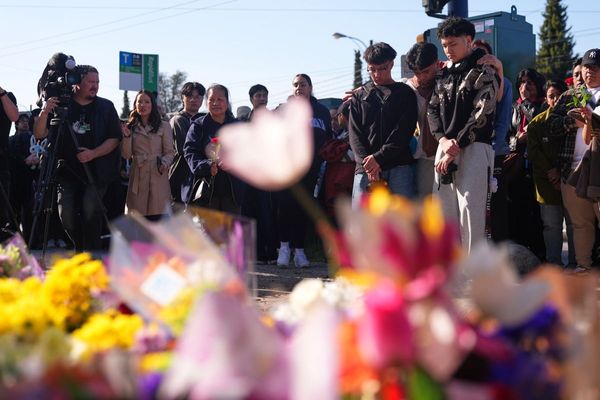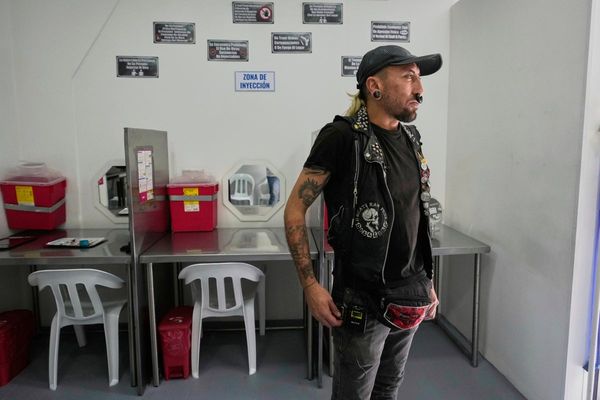
France is the world’s second largest arms exporter after the US, and since the Russian invasion of Ukraine it has been ramping up production – both to send weapons to Kyiv and boost its own supplies. Arms manufacturers such as KNDS have tripled production since 2022, but are facing recruitment challenges.
“We are entering a war economy," French President Emmanuel Macron said in June 2022, a few months after Russia invaded Ukraine.
He called on France's weapons manufacturers to be more innovative, produce more and do it faster.
French-German defence group KNDS was quick to respond.
It produces armed vehicles, artillery systems, guns and ammunition, but its best-known product is currently the Caesar truck-mounted self-propelled howitzers and the 155mm shells they fire.
Caesar systems can fire up to six shells a minute, up to 40kms, and with surgical precision.
They are used in 16 countries worldwide, but around 90 percent of the 100,000 shells they produce are now being used on the battlefields in Ukraine.
"By the end of 2025, we will have sent 113 Caesar canons to Ukraine," Nicolas Chamussy, CEO of KNDS France, told reporters in March.
The Caesar canons are made in the company's manufacturing plant in Bourges, central France – "The last remaining canonry in France," said KNDS France spokesperson Gabriel Massoni.
The region became a hub for arms manufacturing under Napoleon, when such sites were moved inland for security reasons.
'Living the war economy'
Since the beginning of the war in Ukraine, the state-owned KNDS France has embraced the war economy model in earnest. The plant is rapidly expanding – installing temporary hangars and state of the art machinery.
“We’ve invested €600 million of our own capital over the past three years to triple production of both the Caesar howitzers and the 155mm shells they fire,” Massoni explained. “We’ve hired new staff, bought new machinery and expanded the plant. We’re living this war economy every day.”
Prior to 2022, KNDS produced just one or two Caesar systems per month. “Now we’re at six and we aim to reach eight by the end of the year," says Laurent Monzauge, the site’s general manager.
France's Dassault says stepping up Rafale warplane output
The 8-metre metal tubes weighing three tonnes each are brought from the Aubert & Duval metallurgy factory near Lyon, some 300 kilometres south, to be engineered to the nearest micrometre. Once finished the guns are sent to the site in Roanne to be assembled on the vehicles.
Kévin is one of the highly skilled workers on the Caesar gun barrel manufacturing line. “It feels like a privilege to work here,” he said.
Since he took up his post a decade ago, the headcount has "doubled" on his line, he says, and with the increase in production "we've been asked to work Saturdays, though on a voluntary basis".

Listen to a report on arms manufacturing in the Spotlight on France podcast
Made in France
After the end of the Cold War and the fall of the Berlin Wall, France slowed down its defence industry and scaled back arms production. But it continued production at a minimum level, in order not to lose industrial know-how.
Around 4,000 small companies still work in the industry and KNDS called on its 2,000 suppliers to ramp up operations – although it wasn’t always easy for them to finance the surge in demand.
“We’ve supported every one of them,” says Monzauge, explaining that some contracts were paid in advance. “It wouldn’t make sense for KNDS to be able to produce eight guns a month while our suppliers were stuck at three or four.”
Ninety percent of the group's suppliers are in France, he added, with the remaining 10 percent elsewhere in Europe.
EU ministers push for joint defence fund to secure a more self-reliant Europe
”Unfortunately we couldn't find this kind of machine in France," he says, pointing to a €2.5 million lathe they imported. "No one in France had the skills or capacity to make this kind of lathe, because there had been no need for it over the last 20 or 30 years."
Around 200 people work on the Bourges site and the workforce has increased by a third over the last two years, says Stéphane Ferrandon, head of production. "We're going to increase the production payroll by a further 10 to 15 percent this year."
KNDS aims to recruit 50 more staff for the Bourges site, for specific tasks such as mechanised welding.

Welding the special high-elastic-limit (HLE) steel that can be deformed then snap back into position requires very specific skills.
"We're working in the goldsmiths and silversmith trade," says Massoni. "You don't manufacture Caesar canons like a Peugeot 3008 chassis. These are rare skills and they're in short supply."
KNDS has set up a campus at its La-Chapelle-Saint-Ursin site where the 155mm shells are manufactured, to train machinists to upgrade their skills via a one-year apprenticeship.
Economic boost
Orders shot up by 40 percent in 2024 compared to the previous year at KNDS, with sales of €3.8 billion. And the future looks bright: “We have a full order book for the next three years," said Massoni.
It is not the only arms manufacturer in the region – Thales, Safran and Dassault Aviation are not far away.
Since United States President Donald Trump returned to power in January this year, threatening to turn his back on Ukraine and throwing Washington’s commitment to Nato and the defence of Europe into question, the issue of weapons sovereignty has become more pertinent.
Monzauge says none of the components used in manufacturing KNDS weaponry are imported from the US.
EU struggles for defence independence as Trump turns up the heat on security
“They’re ITAR-free,” he says, referring to the International Traffic in Arms Regulations, US regulations which govern the export and import of military materials. “It’s a question of sovereignty, of course.”
Explosives producer Eurenco stopped production in France in 2007 due to lack of business, but has recently relocated to Bergerac, south-west France, to furnish the 155mm shells KMDS makes.
Vistory, a start-up, is developing 3D secure remote printing in Bourges, to be able to produce equipment when it's out of stock.
France is upping its defence budget from €50 billion to €67 billion by 2030, and Macron has talked of upping defence expenditure from 2 percent of GDP to 3.5 percent, although without giving a timeline.
While this is good news for France's defence industry, the question of how to finance the increase given the country's massive deficit remains unanswered.







